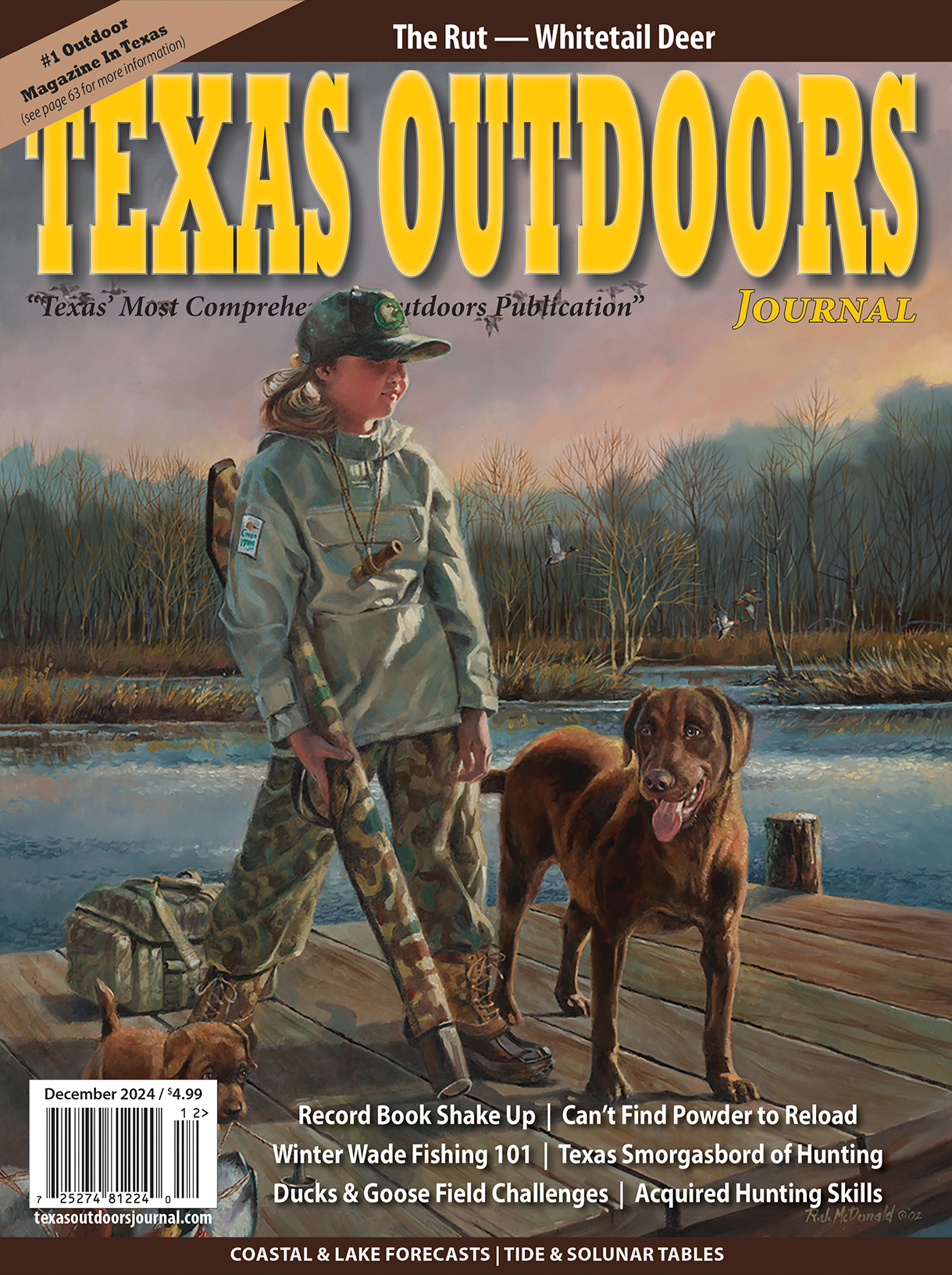
Recovering America’s Wildlife Act Would Bring $63 Million Per Year to Texas
Alliance of Outdoor Conservation, Recreation, Energy, Retail, Academia, Interests Supports 21st-century Wildlife Conservation Funding Proposal
A nationwide alliance of government, business, education and conservation leaders has united to combat one of America’s greatest threats—the decline of our fish and wildlife and their natural habitats, and what this means for people and the economy. Scientists estimate that one-third of wildlife species in the United States are at risk of becoming threatened or endangered without additional funding for their conservation.
The Alliance for America’s Fish & Wildlife, a national group with a sizeable Texas chapter, supports a congressional proposal to create a 21st-century wildlife conservation funding model. This effort grew out of the Blue Ribbon Panel on Sustaining America’s Diverse Fish & Wildlife Resources, involving members representing the outdoor recreation, retail and manufacturing sector, the energy and automotive industries, private landowners, educational institutions, conservation organizations, sportsmen’s groups and state and federal fish and wildlife agencies.
The bipartisan Recovering America’s Wildlife Act, H.R. 4647, introduced by Representatives Jeff Fortenberry (R-NE) and Debbie Dingell (D-MI), would redirect $1.3 billion in existing royalties annually from energy and mineral development on federal lands and waters, money not currently earmarked for any specific fund or purpose. This approach would not require taxpayers or businesses to pay more, but would redirect funds to invest in fish and wildlife conservation. RAWA allocations would follow a formula based on a state’s human population size and land area. Texas would receive the maximum allowed, 5 percent, or $63 million currently. Combined with the required non-federal match of 25 percent, Texas would have almost $80 million per year for research, habitat management and protection, land acquisition, education, law enforcement, and outdoor recreation focused on Species of Greatest Conservation Need (SGCN) listed in the Texas Conservation Action Plan. A preliminary report by Texas Parks and Wildlife Department explains what the bill would mean for Texas, outlines Texas goals and objectives, and highlights examples showing how funds could be spent in Texas.
“For Texas, the Recovering America’s Wildlife Act would mean transformative change for people and wildlife, the kind of breakthrough that comes once in a generation,” said Carter Smith, Texas Parks and Wildlife Department executive director.
“Passage of this bill would galvanize state efforts to conserve and restore more than 1,300 nongame fish and wildlife species of concern here in the Lone Star State. By focusing on these species and their habitats, we could keep common species common and avoid the need for endangered species listings by getting ahead of wildlife declines while there’s still time to act. That’s good for jobs and the economy as well as wildlife, which is why this plan started with buy-in from industry and business. These species and the habitats where they live are the ‘goose that lays the golden egg’ which sustain multi-billion-dollar nature tourism industries in our state, as well as clean air and water and healthy outdoor recreation. H.R. XXXX would mean millions in new grants to nonprofits, universities, landowners, local communities and others. Besides natural resource benefits, this could also transform nature-based recreation and education opportunities for people of all ages, including children and families. It would be the greatest wildlife conservation breakthrough in decades.”
It currently costs the American public hundreds of millions of dollars each year to restore threatened and endangered species, costs that could be avoided or greatly reduced if proactive conservation measures were implemented first. Proactive conservation is good for wildlife, good for taxpayers, good for business and good for our communities. The Recovering America’s Wildlife Act would provide the needed resources for proactive conservation nationwide.
The bill is being called the most important American wildlife conservation proposal since passage of two landmark federal laws Pittman-Robertson in 1937 and Dingell-Johnson in 1950, which provided breakthrough funding for game fish and animals on the brink of extinction.
“America’s hunters, anglers, recreational shooters, and boaters have been the primary funders of state-based conservation efforts to this day,” said Congressional Sportsmen’s Foundation President Jeff Crane. “This recommendation simply directs funding for conservation from other sectors that use our natural resources.”
“We thank Representatives Fortenberry and Dingell for introducing the historic Recovering America’s Wildlife Act,” said Collin O’Mara, President and CEO of the National Wildlife Federation. “This bill will help thousands of wildlife species through proactive, collaborative, on-the-ground efforts. The approach is unique because it calls for early action to save struggling wildlife, rather than waiting until species are on the brink of extinction and need expensive ‘emergency room’ measures to recover. When this bill becomes law, we will increase wildlife populations, strengthen America’s economy, and reduce the need for regulatory measures.”
“A lot is at stake if we do not act soon. Every American benefits when we have healthy and accessible fish and wildlife. We need to start down a new path where we invest proactively in conservation rather than reactively.”
More information about the Recovering America’s Wildlife Act is on the alliance national website at OurNatureUSA.com or on the Texas chapter website at txwildlifealliance.org.
About the Alliance for America’s Fish & Wildlife
The Alliance for America’s Fish and Wildlife formed in 2017 to secure funding for much needed conservation of our most precious natural resources, our fish and wildlife. The Alliance was built upon the strong partnership created by the Blue Ribbon Panel on Sustaining America’s Diverse Fish & Wildlife Resources. The Texas chapter includes more than 200 member organizations representing more than a million Texans. The diverse Texas coalition consists of landowners, conservation organizations, privately-held businesses, sportsmen’s groups, church congregations, educational institutions, and other civic organizations, who have come together to support fish and wildlife conservation, outdoor recreation, and conservation education.
Follow the Alliance for America’s Fish & Wildlife








